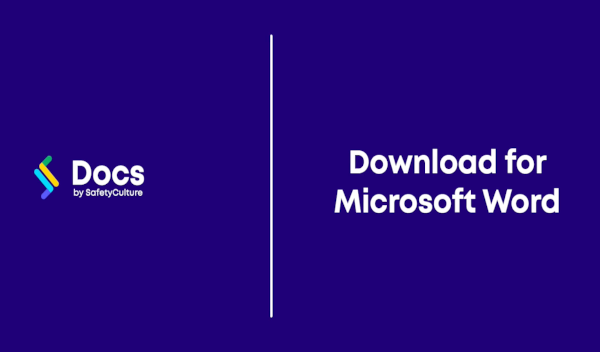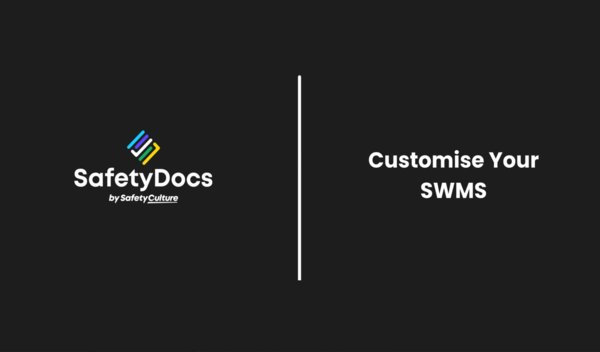Psychosocial Hazards Management Plan
- Instant Document Delivery via Email.
- Add to your existing management system.
- Can assist in ensuring workers are adequately trained.
- Customisation instructions provided.
- Microsoft Word Format (Fully editable).
- Only pay once (no subscriptions required).
Psychosocial Hazards Management Plan
The Psychosocial Hazards Management Plan is a comprehensive set of tools designed to help organisations proactively manage and prevent psychosocial hazards in the workplace. By implementing this plan, organisations can ensure the well-being of their employees, enhance productivity, and maintain compliance with the latest code of practice.
Key Components of the Psychosocial Hazards Management Plan:
- Psychosocial Hazard Policy: This robust policy offers a clear framework for managing psychosocial hazards, detailing employees' and managers' roles and responsibilities. The policy also provides valuable guidance on identifying and addressing psychosocial hazards in the workplace.
- Psychosocial Hazard Procedures: These step-by-step procedures enable seamless policy implementation, covering essential aspects such as risk assessment, communication, and monitoring and evaluation.
- Bullying Policy & Procedures: Offers clear guidelines and strategies to manage and prevent instances of workplace bullying.
- Domestic Violence & DV Workplace Safety Plan: Outlines steps to support employees affected by domestic violence, promoting safety within the workplace.
- Drugs and Alcohol Policy: Sets out procedures to address substance misuse, contributing to a healthier and safer work environment.
- Workplace Fatigue Policy: Provides guidance on identifying and managing employee fatigue, promoting overall well-being.
- Sexual Harassment & Gender-Based Harassment Prevention Plan: Helps businesses proactively manage sexual harassment risks and comply with evolving workplace safety regulations. It includes structured risk assessments, control measures, and reporting processes.
For businesses in Queensland, the included Sexual Harassment & Gender-Based Harassment Prevention Plan meets the new legal requirements effective March 1, 2025. - Psychosocial Risk Assessment Checklist: This comprehensive checklist, is designed to help you identify, assess, and control psychosocial hazards, such as workload, relationships, and organisational culture. The checklist also provides valuable guidance on mitigating risks, making it an indispensable component of the plan.
- Manager Guidance Material: Specially curated for managers, this material equips them with practical tips and advice on identifying and addressing psychosocial hazards within their teams, fostering a supportive and safe work environment.
- Employee Guidance Material: This essential resource educates employees about their role in managing psychosocial hazards. It offers practical tips on hazard identification, reporting, and supporting colleagues, empowering employees to contribute to a healthier workplace.
Benefits of Implementing the Psychosocial Hazards Management Plan:
- Improved Employee Well-being: Proactive management of psychosocial hazards leads to increased job satisfaction, reduced absenteeism, and enhanced productivity.
- Compliance: Implementing the Psychosocial Hazards Management Plan demonstrates your organisation's commitment to adhering to relevant legislation and standards.
- Reputation: Enhance your organisation's reputation as a responsible employer by proactively managing psychosocial hazards in the workplace.
Invest in the success and well-being of your employees and organisation with the Psychosocial Hazards Management Plan. Purchase the plan today to foster a healthier, safer, and more productive workplace.
- Instant Document Delivery via Email.
- Add to your existing management system.
- Can assist in ensuring workers are adequately trained.
- Customisation instructions provided.
- Microsoft Word Format (Fully editable).
- Only pay once (no subscriptions required).
Psychosocial Hazards Management Plan
The Psychosocial Hazards Management Plan is a comprehensive set of tools designed to help organisations proactively manage and prevent psychosocial hazards in the workplace. By implementing this plan, organisations can ensure the well-being of their employees, enhance productivity, and maintain compliance with the latest code of practice.
Key Components of the Psychosocial Hazards Management Plan:
- Psychosocial Hazard Policy: This robust policy offers a clear framework for managing psychosocial hazards, detailing employees' and managers' roles and responsibilities. The policy also provides valuable guidance on identifying and addressing psychosocial hazards in the workplace.
- Psychosocial Hazard Procedures: These step-by-step procedures enable seamless policy implementation, covering essential aspects such as risk assessment, communication, and monitoring and evaluation.
- Bullying Policy & Procedures: Offers clear guidelines and strategies to manage and prevent instances of workplace bullying.
- Domestic Violence & DV Workplace Safety Plan: Outlines steps to support employees affected by domestic violence, promoting safety within the workplace.
- Drugs and Alcohol Policy: Sets out procedures to address substance misuse, contributing to a healthier and safer work environment.
- Workplace Fatigue Policy: Provides guidance on identifying and managing employee fatigue, promoting overall well-being.
- Sexual Harassment & Gender-Based Harassment Prevention Plan: Helps businesses proactively manage sexual harassment risks and comply with evolving workplace safety regulations. It includes structured risk assessments, control measures, and reporting processes.
For businesses in Queensland, the included Sexual Harassment & Gender-Based Harassment Prevention Plan meets the new legal requirements effective March 1, 2025. - Psychosocial Risk Assessment Checklist: This comprehensive checklist, is designed to help you identify, assess, and control psychosocial hazards, such as workload, relationships, and organisational culture. The checklist also provides valuable guidance on mitigating risks, making it an indispensable component of the plan.
- Manager Guidance Material: Specially curated for managers, this material equips them with practical tips and advice on identifying and addressing psychosocial hazards within their teams, fostering a supportive and safe work environment.
- Employee Guidance Material: This essential resource educates employees about their role in managing psychosocial hazards. It offers practical tips on hazard identification, reporting, and supporting colleagues, empowering employees to contribute to a healthier workplace.
Benefits of Implementing the Psychosocial Hazards Management Plan:
- Improved Employee Well-being: Proactive management of psychosocial hazards leads to increased job satisfaction, reduced absenteeism, and enhanced productivity.
- Compliance: Implementing the Psychosocial Hazards Management Plan demonstrates your organisation's commitment to adhering to relevant legislation and standards.
- Reputation: Enhance your organisation's reputation as a responsible employer by proactively managing psychosocial hazards in the workplace.
Invest in the success and well-being of your employees and organisation with the Psychosocial Hazards Management Plan. Purchase the plan today to foster a healthier, safer, and more productive workplace.


